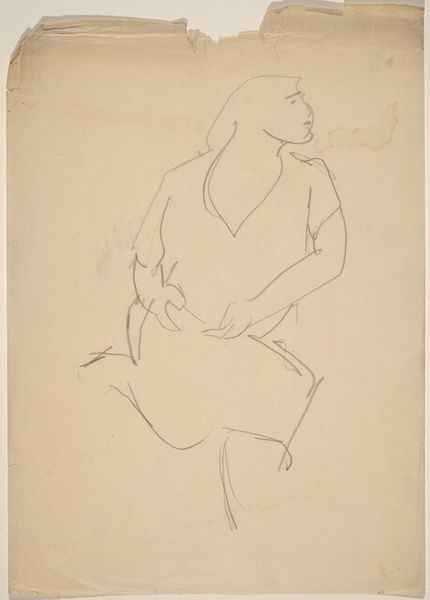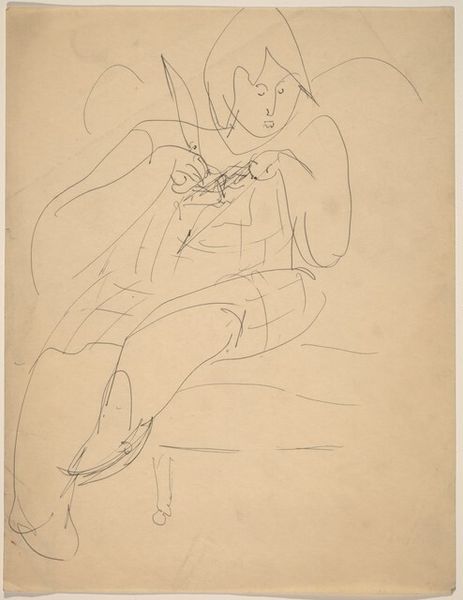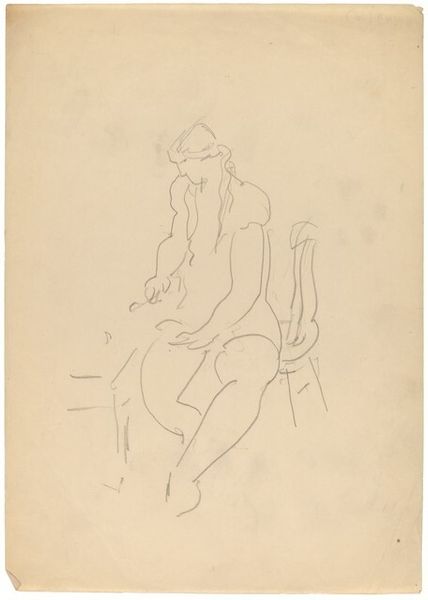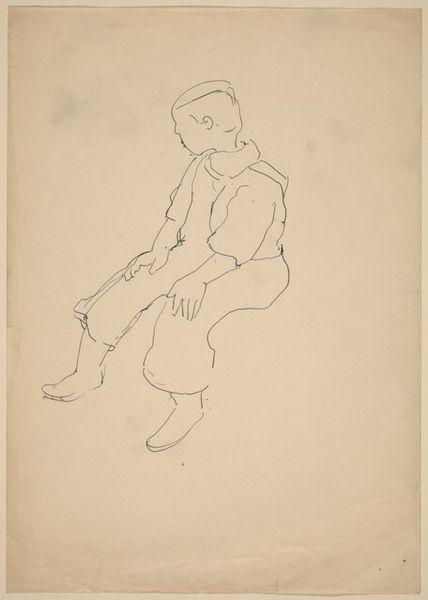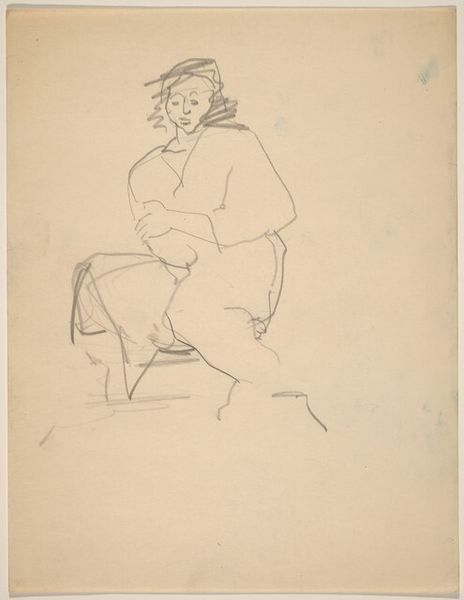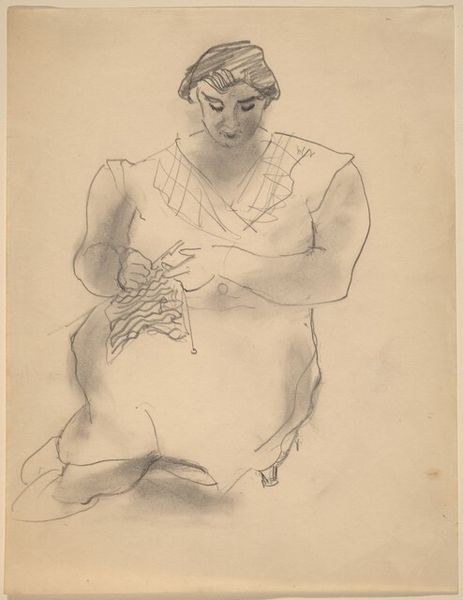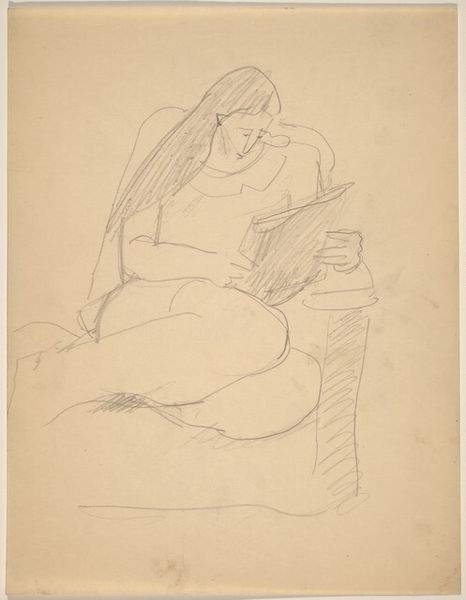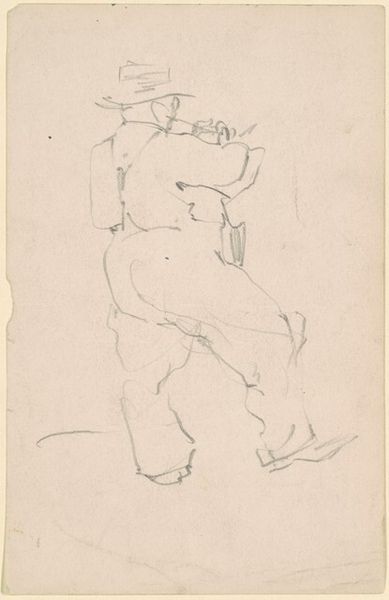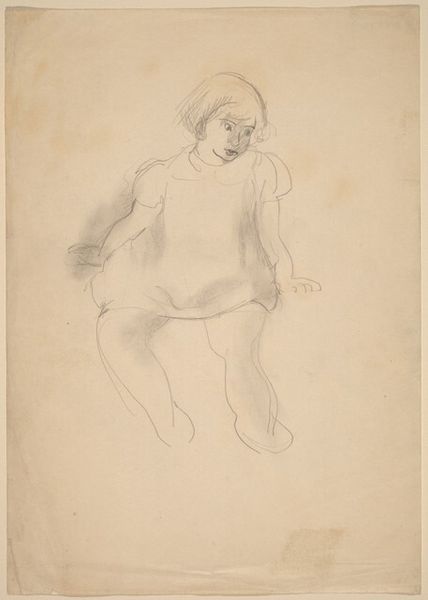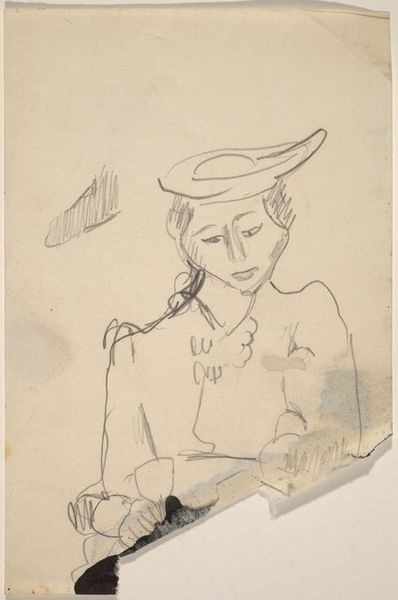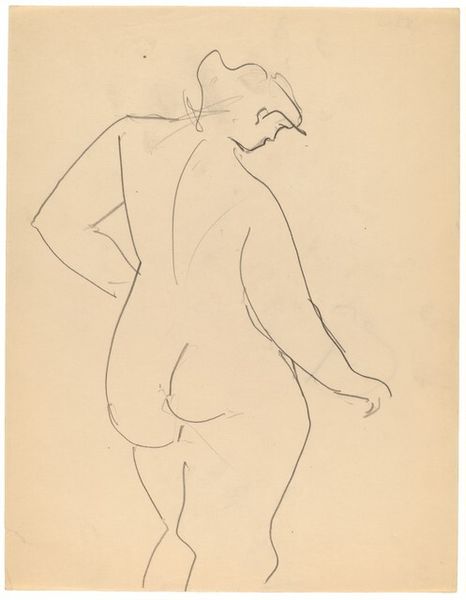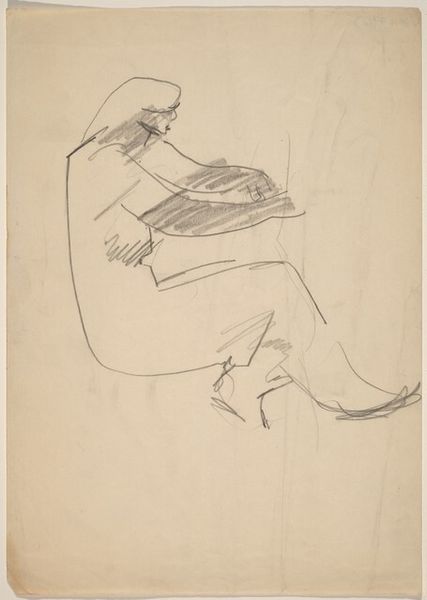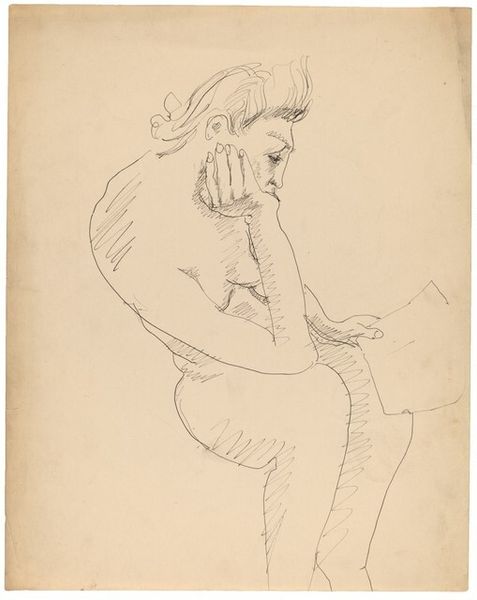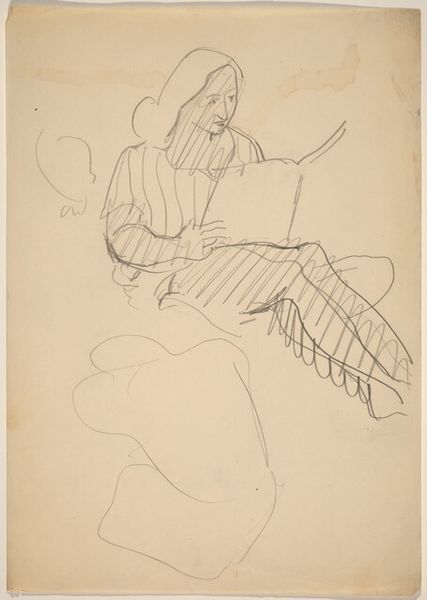
drawing, paper, pencil
#
pencil drawn
#
drawing
#
pencil sketch
#
figuration
#
paper
#
pencil drawing
#
pencil
#
academic-art
Dimensions: overall: 27.7 x 21.3 cm (10 7/8 x 8 3/8 in.)
Copyright: National Gallery of Art: CC0 1.0
Editor: Here we have "Seated Woman," a pencil drawing by Mark Rothko. I'm struck by how the seemingly simple lines convey a sense of quiet contemplation. It's almost like an academic exercise in capturing form, but somehow it feels emotionally resonant too. What catches your eye? Curator: Initially, observe the economy of line. Rothko uses it not to define the figure with precision but to suggest form through careful articulation of contour and shadow. Where does the light source appear to be, and how does the artist utilize it to model the figure's volume? Editor: The light seems to come from the upper left, casting shadows on the right side of the figure, particularly her arm and the back of her head. It’s subtle, not highly rendered. Curator: Precisely. And notice how the shadows are rendered through layered, almost hesitant, strokes. Rothko isn't just depicting a woman; he's exploring the interplay between light, form, and the materiality of the pencil itself. Do you see any distortion in the anatomy, and if so, how does that play into the overall composition? Editor: The feet are definitely not drawn with anatomical accuracy. They appear almost as simplified shapes. Perhaps this is meant to shift the focus to the upper body and the face. Curator: An interesting proposition. The simplification directs the viewer’s eye upward, where the facial expression—minimal as it is—carries the weight of the figure's presence. Also, consider how the emptiness of the background isolates the figure, placing emphasis on her internal state. It prefigures his later, more abstract work, wouldn't you agree? Editor: I do see that now. The focus on form, light, and emotion, divorced from a specific narrative, definitely anticipates the abstract expressionism he's known for. I originally saw it as academic, but it’s much more than just a study. Curator: Exactly. It's an exploration of fundamental visual elements, a reductive exercise that ultimately points toward Rothko’s future artistic direction.
Comments
No comments
Be the first to comment and join the conversation on the ultimate creative platform.
